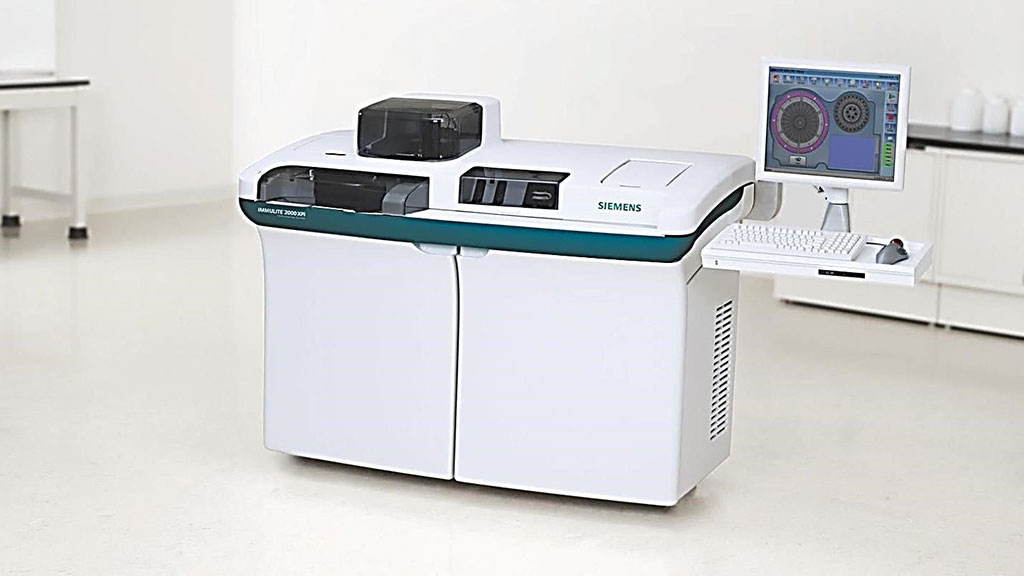Immunoassays Evaluated for Thyroid-Stimulating Receptor Antibody in Graves’ Disease
By LabMedica International staff writers
Posted on 23 Nov 2021
Graves' disease (GD), also known as toxic diffuse goiter, is an autoimmune disease that affects the thyroid. It frequently results in and is the most common cause of hyperthyroidism and it also often results in an enlarged thyroid. Posted on 23 Nov 2021
Thyroid-stimulating hormone (TSH) receptor (TSHR) autoantibodies (TRAbs) are pathognomonic of GD and are detected in the serum of approximately 98% of patients with untreated GD. The specific and sensitive detection of thyroid-stimulating immunoglobulin (TSI) from other types of TRAbs is becoming increasingly important for the diagnostic accuracy of the Graves’ hyperthyroidism and of the extrathyroidal manifestations of GD.

Image: The IMMULITE 2000 XPi Immunoassay System provides multiple tests on a single, easy-to-use analyzer, including the thyroid-stimulating immunoglobulin assay (Photo courtesy of Siemens Healthcare)
Medical Laboratorians at the Shanghai Medical College (Shanghai, China) and their colleagues recruited 559 patients in the period between October 2020 and February 2021. There were 166 GD patients, 81 patients of whom were untreated GD, 393 patients with other thyroid diseases including 79 patients with Hashimoto's thyroiditis, 103 patients with thyroid nodules, 96 patients with hypothyroidism, 59 patients with nontoxic goiter, and 56 patients with thyroid cyst. In addition, 20 euthyroid healthy subjects were recruited as normal controls.
The team evaluated the analytical and clinical performance of two immunoassays for diagnosis of Graves’ disease (GD): the Immulite thyroid-stimulating immunoglobulin (TSI, Siemens Healthcare, Erlangen, Germany), and the Elecsys Anti-TSH receptor (TSHR), assay (Roche Diagnostics, Mannheim, Germany). The Immulite TSI assay is a chemiluminescence immunoassay with the clinical decision point of 0.55 IU/L. The Roche Elecsys Anti-TSHR assay is a competitive assay using electrochemiluminescence detection.
The investigators reported that the repeatability and intermediate imprecision coefficient of variation (CV%) of the TSI assay were 3.8% and 4.1% at 0.95 IU/L, and 3.5% and 3.6% at 19.5 IU/L, respectively. The assays were linear over a range 0.27–38.5 IU/L. There was a high correlation between the quantitative results of the two methods. The cut-off value obtained by ROC analysis for TSI assay was 0.7 IU/L with sensitivity of 93.7% and specificity of 85.1%. An overall qualitative agreement of 91.5% between two methods was observed. Among 44 patients with discordant qualitative results, the TSI assay provided more satisfactory results consistent with clinical diagnoses.
The authors concluded that the Immulite TSI assay specifically measured the pathogenic antibody of GD and exhibited excellent analytical performance. The Immulite TSI assay may be of great value for the clinical diagnosis of GD. The study was published on November 11, 2021 in the Journal of Clinical Laboratory Analysis.
Related Links:
Shanghai Medical College
Siemens Healthcare
Roche Diagnostics









 Analyzer.jpg)




